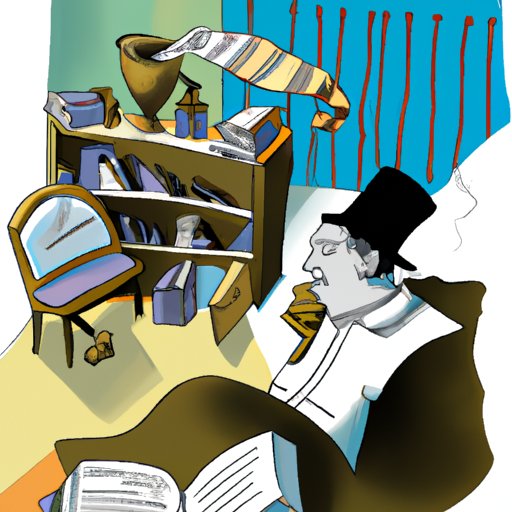Introduction
Local color is a literary term that refers to the unique characteristics of a particular region or culture. It is often used by authors to evoke a sense of place and to give readers an insight into the customs and beliefs of a particular area. By exploring the use of local color in literature, we can gain a better understanding of how authors use their settings and characters to convey deeper messages and themes.
Exploring the Meaning of Local Color in Literature
The term “local color” was first used in the late 19th century to refer to stories and novels that focused on the culture and customs of a specific region. This type of writing was popularized by authors such as Harriet Beecher Stowe and Mark Twain, who used regional language, dialects, and descriptions of everyday life to bring their stories to life. Local color literature was often used to depict the struggles of common people and to provide insight into the socio-economic conditions of a particular area.
Today, local color is still used to represent a particular region or culture. Authors may use descriptions of landscape, dialects, clothing, and customs to evoke a sense of place and to help readers understand the characters and their motivations. By incorporating elements of local color, authors can create a vivid setting and make their stories more realistic and relatable.

A Study of Local Color in Classic Works of Fiction
Local color has been used in literature for centuries. In Homer’s epic poem The Odyssey, the author uses descriptions of the Greek islands and the characters’ clothing and customs to create a vivid picture of the region. Other classic works of fiction such as Jane Austen’s Pride and Prejudice and Charles Dickens’ Great Expectations also make use of local color to depict time and place. By including details of the characters’ lives, authors can create a richer and more immersive experience for readers.

How Local Color is Used to Create Atmosphere in Literary Works
In addition to creating a sense of place, authors can use local color to create atmosphere in their works. By using descriptions of landscape, dialects, and customs, authors can evoke a certain mood or tone in their stories. For example, William Faulkner’s The Sound and the Fury uses the Southern dialect and customs of Mississippi to evoke a sense of loneliness and despair. By utilizing local color, authors can create a more immersive experience for readers.
Examining the Use of Local Color in 19th Century Novels
The popularity of local color in 19th century novels is evident in works such as Emily Bronte’s Wuthering Heights and Nathaniel Hawthorne’s The Scarlet Letter. By including descriptions of the English countryside and the Puritan customs of New England, these authors were able to depict not only the physical environment, but also the culture and society of the time. By incorporating elements of local color, authors can create a more vivid and authentic setting for their stories.

Analyzing the Role of Local Color in Modern Literature
The use of local color in modern literature has evolved over time, but it still remains an important element of many stories. Authors such as Toni Morrison and Jhumpa Lahiri have used local color to explore the experiences of marginalized communities and to challenge traditional notions of identity and belonging. By incorporating elements of local color, these authors are able to create a more nuanced and complex depiction of their settings and characters.
Discovering the Impact of Local Color on Character Development
Local color can also be used to shape character development. By incorporating elements of language, dialect, and customs, authors can create characters that feel more real and relatable. For example, in Margaret Mitchell’s Gone with the Wind, the author uses local color to depict the differences between the aristocratic O’Hara family and the poor slaves on their plantation. By utilizing local color, authors can create characters that feel more authentic and three-dimensional.

Investigating the Symbolic Significance of Local Color in Literature
Local color can also be used to convey deeper messages and themes. By incorporating elements of language, dialect, and customs, authors can use local color to explore issues of identity, belonging, and power. For example, in Toni Morrison’s Beloved, the author uses local color to explore the legacy of slavery and the impact it has had on African American culture. By utilizing local color, authors can explore complex issues in a more meaningful and powerful way.
Conclusion
Local color is an important element of literature that can be used to create a vivid and immersive experience for readers. By exploring the history and origin of local color, this article has examined how it has been used in classic works of literature to create atmosphere and shape characters. It has also investigated the symbolic significance of local color in modern literature and how it can be used to convey deeper messages and themes. Ultimately, local color is an essential tool for authors that can be used to create a more vibrant and realistic world for their stories.
(Note: Is this article not meeting your expectations? Do you have knowledge or insights to share? Unlock new opportunities and expand your reach by joining our authors team. Click Registration to join us and share your expertise with our readers.)
